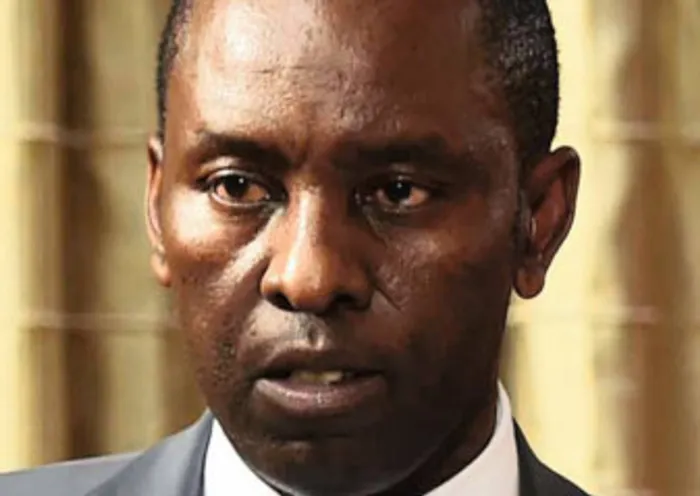Enigmatic Zwane another liability?

(Minister of Mineral Resources Mosebenzi Joseph Zwane and Judge of the Constitutional Court, Justice Johann van der Westhuizen). President Jacob Zuma during the swearing-in Ceremony of New Minister of Mineral Resources Mosebenzi Joseph Zwane at the Union Buidings in Pretoria. South Africa. 23/09/2015. Siyabulela Duda (Minister of Mineral Resources Mosebenzi Joseph Zwane and Judge of the Constitutional Court, Justice Johann van der Westhuizen). President Jacob Zuma during the swearing-in Ceremony of New Minister of Mineral Resources Mosebenzi Joseph Zwane at the Union Buidings in Pretoria. South Africa. 23/09/2015. Siyabulela Duda
If there was another liability of a minister, it is Mosebenzi Zwane, who has been in the shadows ever since his controversial appointment to replace mining minister Ngoako Ramatlhodi.
Ramatlhodi’s firing is no different to that of former finance minister Nhlanhla Nene.
By all accounts Ramatlhodi had crossed a few red lines; standing up to what he thought was right, but in turn raised the ire of President Jacob Zuma.
Ramatlhodi was shown the door 16 months into the job just as he was working hard, just like Nene, to stabilise things.
In many ways Zwane is no different to Van Rooyen, who now holds the record of being a finance minister with the world’s shortest tenure – just 96 hours. Zwane is a big unknown.
He has said very little or added any substance to policy issues since his appointment in September.
Zwane previously served as MEC of Agriculture and Rural Development as well as Economic Development and Environmental Affairs in the Free State. His appointment was slammed from day one amid concerns that he had little known experience to be able to deal with any of the challenges facing mining, which politically and economically remains a highly contested space.
Julius Malema’s Economic Freedom Fighters entered the fray and called on the courts to force President Zuma to remove him from his post arguing that his appointment was illegal. But unlike Van Rooyen, Zwane has continued to sail under the radar.
To some in the industry, Zwane has been like an absent father unlike his predecessor Ramatlhodi. His critics says his silence has been deafening at a time when stakeholders were desperate for ways to breathe life into the troubled industry which now accounts for 8.3 percent of the country’s gross domestic product.
Zwane’s first address to the media did not inspire confidence. Speaking after an underground visit at Harmony Gold’s Doornkop operation in October, Zwane said South Africa was looking at buying depressed mining assets amid weak commodity prices.
Those who studied his comments thought the move would be too risky to taxpayers when commodity prices have plunged further. Tumbling prices and falling demand has mining companies bracing to cut jobs, something Zwane has not really said how he intends to deal with. Zwane has been quiet about regulatory uncertainty, the uneasy labour relations environment and fallout from the Marikana massacre of mid-August 2012. He said nothing when Anglo American last week announced radical plans to reduce its mines from 55 to 20 and cut a massive number of jobs across the global operations.
The mining industry has been described as being in intensive care, with as many as 24 000 jobs now already gone this year. So, the question that cannot be avoided is why would Zuma make a U-turn on Nene’s replacement and not on Ramatlhodi’s?
Is it because the banking sector is more important than the mining sector? Mining industry players certainly do not think so. There is a feeling that Zwane’s skills might be better utilised elsewhere, more so as he seems detached from the need to be visible.
In October he bailed out at the inaugural SA Diamond Indaba where he was scheduled to address industry players after being summoned elsewhere, a reflection perhaps that his priorities have not quite found perfect order.
In the three months since his appointment Zwane remains an enigma.
BUSINESS REPORT